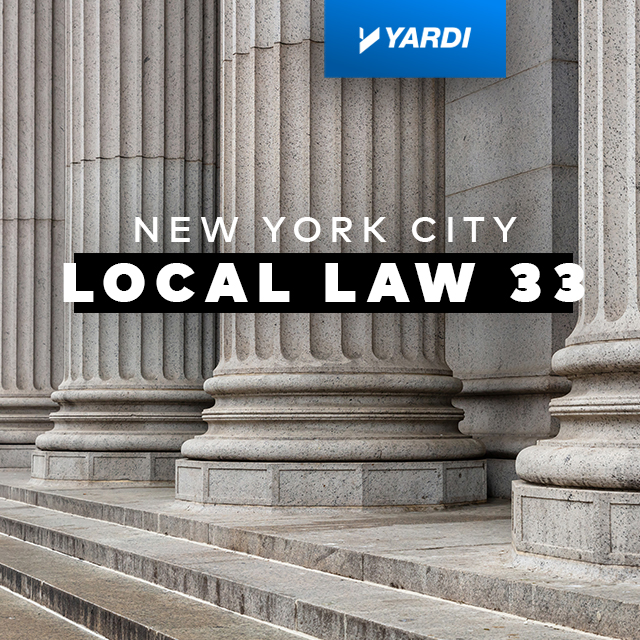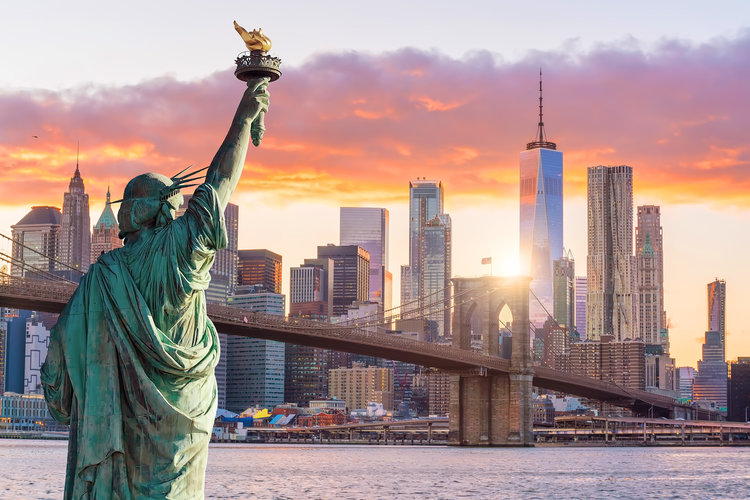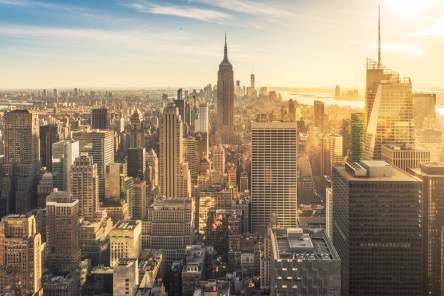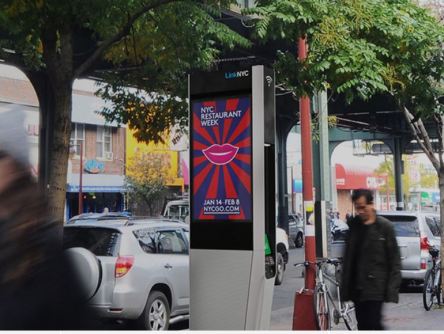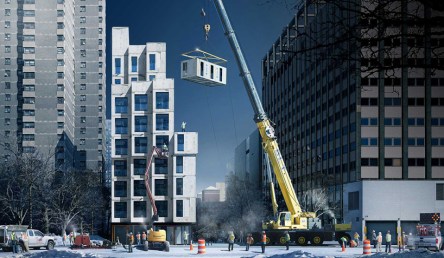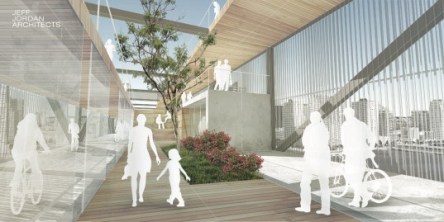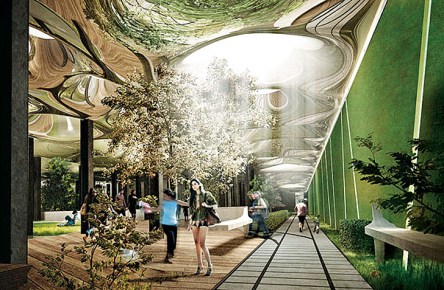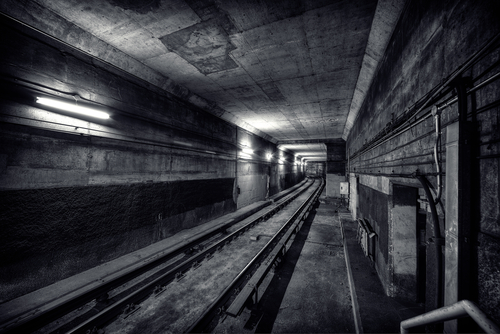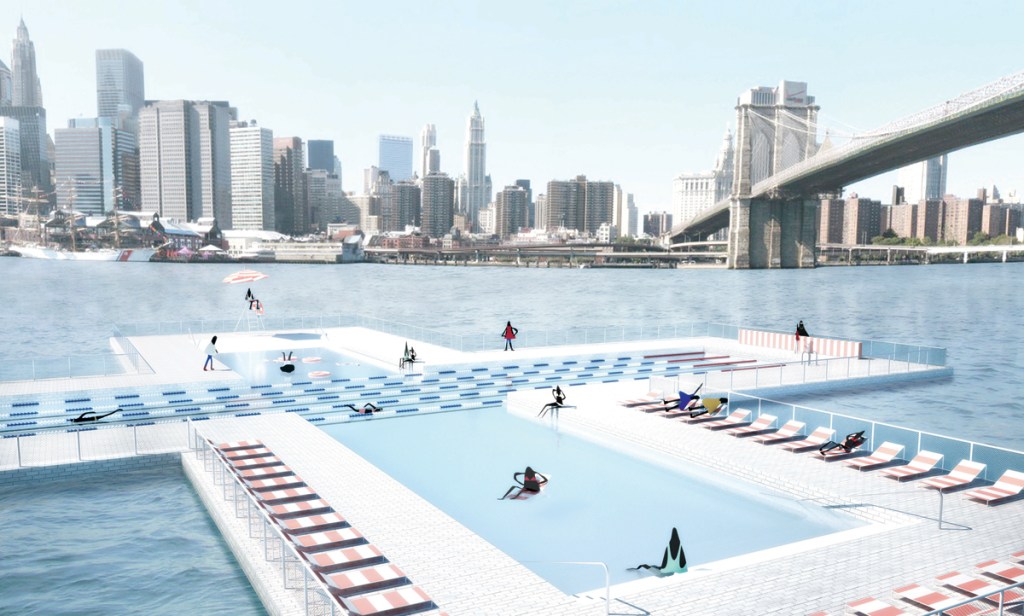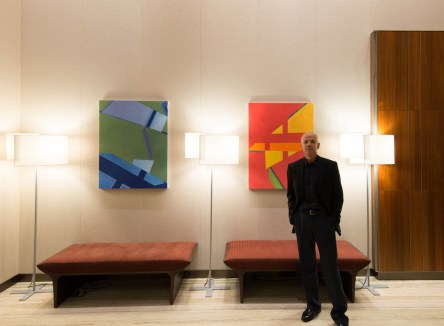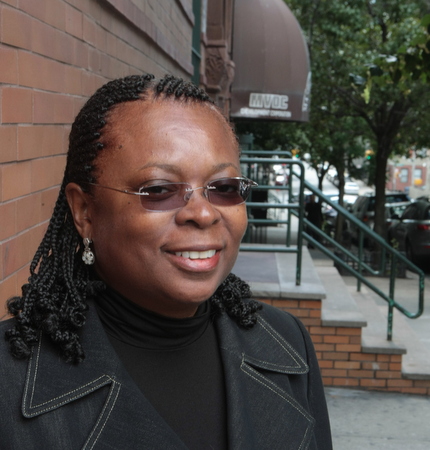In December 2017, the New York City Council passed Local Law 33. The administrative code and a subsequent amendment require owners of buildings over 25,000 square feet to post the building’s energy usage and efficiency scores on the premises. The Oct. 31 deadline for building owners to post their Energy Efficiency Rating Label for 2022 is fast approaching. Scores for 2022 are scheduled to posted on the New York City website by Oct. 1. Similar to the health code ratings seen in many restaurants, the system assigns a letter according to the building’s ENERGY STAR® Portfolio Manager® score, which is required annually. Buildings with a score between 85-100 earn an A, 70-84 a B, 55-69 a C, and 1-54 a D. (A score of 75, for example, means that a building performs better than 75% of other buildings.) Building owners who fail to post their grades are subject to fines and receive an F grade. Building owners and operators concerned about their scores can confirm that the listed square footage, the number of bedrooms and units for their properties are correct. They can also hold an energy audit to identify potential improvements including measures to reduce carbon emissions, which impact compliance with Local Law 97, and involve building tenants and residents in energy efficiency measures. Learn more about Local Law 33 and its compliance criteria and see a sample label. Need help benchmarking or preparing for an energy audit? Looking for ways to improve your property’s energy efficiency? Your Yardi Energy Team is available to...
Attracting Renters
In New York City
The Bronx, Brooklyn, Manhattan, Queens, and Staten Island: together, they make up the most vibrant city in the world. But New York needs no advertising. Any New Yorker will tell you that each of the five boroughs has its own unique charm. So, what do renters expect when looking for an apartment in NYC? We compiled a short list of tips to attract potential renters in the Big Apple. Keep it clean Looking for an apartment that’s in move-in ready condition is a priority for most people looking to rent in New York City. As such, hiring regular, professional cleaners for the entire apartment building can do wonders to attract new renters. It also shows those who already live there that the building management looks out for their well-being. Make sure any maintenance issues are handled before a showing—no matter how small. Keep it safe Whether it’s Brooklyn apartments for rent or apartments in Queens, feeling safe in the city that never sleeps is paramount for renters. This is why ensuring the safety of the premises is crucial. No matter whether your renters are in it for the long-term, maintenance support is key. Moreover, regular check-ups and upgrades to security systems and locks are essential. Keep it close Proximity to work, school, or anything of importance to the renter is an amenity most NYC renters would be willing to pay big bucks for. Once a prospect shows interest in your rental, it’s most likely because they are happy with the location or are willing to compromise. In NYC, proximity to public transit is one of the top criteria renters use when searching for apartments. Advertise convenient transportation options near the property’s location, but always be honest. Staten Island might be just a ferry ride...
NYC Climate Law
Yardi Coaches for Compliance
New York City’s Local Law 97, part of a package of legislation comprising the Climate Mobilization Act, was enacted in May. It’s designed to drastically reduce carbon emissions by imposing stringent carbon emission limits for most commercial properties over 25,000 square feet. Impacting more than 57,000 buildings and aiming to reduce carbon emissions 80% by 2050, the statute stands as “the most ambitious climate legislation for buildings enacted by any city in the world,” according to The Urban Green Council, a New York-based sustainability advocacy group. The law’s emissions calculations consider the total building load, not just base building energy usage. With tenants accounting for well over 50% of usage in many buildings, that means property owners should “carefully vet their business plans and be sure they are planning for this environment, since it represents a significant change for both owners and their tenants,” said James Nelson and Terri Gumula of commercial real estate company Avison Young, writing in Real Estate Weekly. Estimates of what city landlords will spend to comply with Local Law 97 run to $20 billion and up. With the first compliance period starting in 2024, that group is on the clock. Webinar offers resources Yardi energy experts Brian Fridkin and Maria Solobay recently presented a webinar hosted by Commercial Property Executive to give property managers tips on easing the transition to Local Law 97. A representative from the New York State Energy Research and Development Authority (NYSERDA), a public benefit corporation that promotes energy efficiency and renewable energy sources, also spoke about programs already in place in the state. The presenters listed prescriptive conservation measures required by the new law including adjusting temperature set points, repairing heating system leaks, insulating pipes and installing timers on exhaust fans. Additional steps supporting compliance include embedding efficiency requirements in future leases, upgrading lighting and lighting sensors in tenant spaces, and friendly energy-saving competitions. However, Fridkin pointed out, “For many buildings, just completing the required measures won’t be enough to meet the emissions limits in the law.” Owners will also need to invest in optimizing heating, ventilation and air conditioning systems, fault detection and diagnostics, and metering equipment. Solar or wind generation installations are other options. “You can have discussions with tenants about upgrading their lighting or installing occupancy sensors in their spaces, which would reduce their monthly energy bill as well as move toward complying with the law. And you can have tenant energy competitions to see who can reduce their emissions the most. You might also work on switching out tenant HVAC units for more efficient ones or tying in a tenant’s HVAC to the building’s system,” Fridkin said. A key first step toward compliance is implementing real-time energy management (RTEM) to collect live and historical building performance data. This data helps building owners optimize the building’s energy consumption (ultimately reducing greenhouse gas emissions) and prove how the property is performing. RTEM systems can help improve ENERGY STAR® scores, a key consideration because the building types covered under Local Law 97 are already required to complete ENERGY STAR benchmarking every year under another law. Learn how Yardi technology and NYSERDA incentives support building managers who seek to leverage RTEM. Yardi is an approved vendor for NYSERDA’s RTEM program and an ENERGY STAR Partner of the...
Manhattan
A Renters’ Market?
For the first time in four years, average rents in Manhattan are decreasing across the board. In the past, rents occasionally declined in one or two floor plans. Larger units demonstrated the most notable price fluctuations. Highly sought-after studio units were most likely to maintain consistent or climbing value. Yet according to a recent Bloomberg report, the current decrease in prices applies to apartments of all sizes. An increase in supply is the main catalyst. Recent construction has given Manhattan renters more options. The Eugene, the tallest residential skyscraper in the city, began leasing this year. Vitrea and Waterline Square, both with jaw-dropping architecture, are also enticing renters their way. Throughout Manhattan, more than 20 new buildings will start leasing this year, according to Curbed. The new competition has created an atmosphere that hasn’t existed since 2012: excess apartments sitting vacant on the market for weeks. The conditions encouraged many landlords to explore less expensive asking rents—for Manhattan, anyway. Bloomberg reports that median rents for studio apartments dropped by 2.6 percent. In February, that translated to a median list price of $2,500. Prices for one-bedroom units fell by 1.3 percent to $3,350. Two-bedroom apartments declined the most, dropping 5.2 percent to $4,500. With a decrease of 3.7 percent, three-bedroom units have the second farthest decline. These units average $6,031. The median rent price for all units decreased 0.9 percent to $3,350. Landlords have dropped asking prices by an average of 3.3 percent, 0.8 percent lower than February 2016, report appraiser Miller Samuel Inc. and brokerage Douglas Elliman Real Estate. The report highlights 6,872 vacant units at the close of February. That’s 12 percent more vacancies year-over-year. Melinda Sicari, a broker with Douglas Elliman, recalls the change in customer bravado, “In the months of January...
Neighborhood Match
Finding a perfect fit
With so many options to choose from, it can be hard for renters to know when they have found the perfect neighborhood to call home. A new portal makes relocation a bit easier by combining ILS, reviews, and neighborhood matching services. Place I Live Portal offers neighborhood matching for those seeking rentals or home ownership in New York City. Rather than identifying homes based solely on price and a predetermined location, Place I Live considers many of the users’ personal preferences and priorities: pedestrian trails, commute times, architectural styles, neighborhood character, and diversity, to name a few. This approach helps users narrow down their search while considering neighborhoods that they may have otherwise overlooked. The system is designed to constantly improve itself. Learning technologies allow the software to increase accuracy with every inquiry that the user makes. And though the app currently features 288 neighborhoods, that number will continue to increase over time. After gathering data on the users’ preferences, Place I Live recommends ten neighborhood options, each with a miniature profile of the neighborhood. Users navigate details on the neighborhoods using a menu that was configured by their previously selected parameters. Standard menu options include a list of amenities, commute options, crime statistics, and community reviews. Though limited now, the reviews feature stands to be a big hit as program popularity grows. Prospects can learn about the community from current and former residents. This key information may increase the comfort levels of remote home seekers, who may not be able to visit the neighborhood before relocating. The menu can also funnel users directly to listing services such as Zillow, RentHop, StreetEasy, and Homes.com. This feature makes it easy for users to keep tabs on vacancies in their favorite neighborhoods. In the future, this...
LinkNYC
Free WiFi in the City
Ever wonder what the future looks like for New York City’s payphones? Well, you won’t be seeing them for too long as they disappear like the extinct species they’ve become. But a new public utility kiosk is coming along to take their place. LinkNYC, a consortium of experts in technology, media, user experience and connectivity that includes Intersection, Qualcomm, and CIVIQ Smartscapes, has plans to replace them with a high-tech sibling. The launch has already begun with a beta phase rolling out a fiber optic network of kiosks equipped with different types of free services such as high speed internet, web browsing, cell phone charging and calls to within the U.S. Additional apps, features and services will be rolled out on an ongoing basis over the next few years. “It’s going to be the largest and fastest public Wi-Fi network in the world,” Collin Odonell, managing member of CityBridge, said in a prepared statement. “It’s really the first of this kind of network and it’s going to transform the streets and people’s way to access information.” Privacy and security is the main concern, especially when the subject is some public Wi-Fi network. LinkNYC claims it offers two types of networks: a public Wi-Fi one and a private encrypted one. The private, fully equipped network is accessible only by devices that support Hotspot 2.0 (currently, LinkNYC only supports Apple gear). On its public network, LinkNYC will be able to track the user’s MAC address (which won’t be tracked either, claims LinkNYC). In addition, users will have the option to clear their sessions once they’ve done using the kiosk. Please keep in mind though that it’s still very risky to log in to bank accounts over public networks and that even though the user information won’t...
New Kind of Cozy
My Micro NY
What can you get for less than 400 square feet? How about a gym, a roof terrace, stainless steel appliances and the chance to finally ditch the roommates and lay claim to your own slice of paradise. That’s the option currently being offered by Carmel Place, New York City’s first ever micro-unit development. Originally called, “My Micro NY,” this Lower East Side building includes 14 affordable housing units and is set to open in February of 2016. Sitting smack dab in the middle of Kips Bay, the newly christened Carmel Place will be New York’s tallest modular building. Winner of the 2012 adapt NYC competition, which strove to uncover a solution to the City’s housing problem, Carmel Place came about through a collaborative effort between Monadnock Development and the Lower East Side People’s Mutual Housing Association. The project’s designers, naArchitects, chose modular materials to reduce construction time, and a series of architectural flourishes make use of vertical spaces to create a sense of openness and light. Built in the Brooklyn Navy Yard and delivered by truck via the Manhattan Bridge, the nine-story Carmel Place apartments rise up on 333 East 27th street like a set of building blocks – gray in color, but multifaceted in the opportunities they promise to weary urban renters looking for a small space they can call their own. Each unit comes outfitted with kitchenettes, mini-fridges, and a two-burner/microwave combination in place of a stove. While the bathrooms are restricted to showers only – no claw foot tubs in this joint – all the apartments are wheelchair accessible. The designers made sure to incorporate large windows, Juliette balconies and 9.5ft windows to create a sense of openness and light. With hardwood floors and mostly white cabinetry, sample photos project a...
NYC Liberty Bridge
Headed toward reality?
For many Jersey City is “the sixth borough,” even though at times it feels like it’s a world away from New York City. There are only a few miles from Manhattan to Jersey with the Hudson River crossing of about a mile. Yet, moving from one side of the Hudson to the other means taking a relatively circuitous route or using the busy PATH (Port Authority Trans-Hudson) system. The PATH system cannot keep up with the ever-higher number of commuters—240,000 people per work day—the ferry is expensive enough to make you want to call Uber, the train system is pretty unreliable, and tunnels need repairs. A new proposal might change all this. Kevin Shane, a 34-year-old Jersey City resident employed at the real estate crowdfunding company Sharestates, has invested much of his free time developing a plan that would enable commuters and tourists to bike or walk between downtown Jersey City apartments and Lower Manhattan. Yes, he envisioned a pedestrian bridge over Hudson—more than a mile long (1.5km) and more than 200 feet (60m) above the river. He envisioned another Liberty Bridge. Recently, Kevin met with Jersey City architect Jeff Jordan of Jeff Jordan Architects, who saw the greatness of Kevin’s daring idea and decided to join forces. Shortly after, Jordan jumped on board pro bono, releasing a series of appealing renderings that he designed with the assistance of his summer architecture interns and the Liberty Bridge turned from daydream to media darling. “It was provocative. I knew it would be a fun project to be involved in,” said Jordan, 38, who believes the bridge is buildable. “This isn’t a space station—it’s a bridge across a river. It comes down to money and will, but I think it’s feasible.” The Liberty Bridge idea is...
Under Delancey Street...
New York's Lowline Project
A new era of metropolitan re-use and restoration is taking hold in cities around the world. On New York’s Lower East Side, two visionaries are taking the urban greenspace movement to the next level by putting it underground. With a planned debut in 2020, the LowLine project promises to create a calm, cultivated woodland atmosphere in an abandoned trolley terminal sprawled out beneath Delancey Street. Buried in New York’s Lower East Side lives a secret space and futuristic opportunity. In 1908, the Williamsburg Bridge Trolley Terminal debuted. The one-acre property located under Delancey Street primarily served trolley passengers traversing Manhattan’s submerged passageways. Though it’s been shuttered for more than 60 years, the original vaulted ceilings and cobblestone walkways still sit, patiently waiting for a new era of city residents to venture below. If James Ramsey and Daniel Barasch have their way, those Big Apple visitors will soon be enjoying a belowground wonderland, outfitted with hidden nooks, man-made stalagmites, trees and maybe even a hitchhiking frog or two all lit-up by the latest in solar-refraction technology. Christened the LowLine, this subterranean greenspace is part botanical garden, part laboratory, and part social experiment. For co-founders Ramsey and Barasch, the LowLine offers the chance to add much-needed greenery to one of the city’s most urban environments. A Shared Vision Manhattan’s Lower East Side represents a microcosm the borough’s transformation from humble, insular neighborhood into a jubilant melting pot of immigrants, boutique businesses, corporate high-rises and creative visionaries. When Ramsey learned of the Williamsburg trolley terminal in 2008, he was struck by its potential. He envisioned plants and trees thriving in a sort of “park” that would benefit the entire community. “It’s not every day that you find 60,000 square feet in New York, right?” Ramsey recently stated...
Daylighting Technology
Emerging Underground Lighting
Beneath the cobblestones of New York’s Lower East Side, technology is about to present a curious lesson to the world—plants and trees can live a healthy life. We’re not talking about some new lab-modified plant hybrid, but rather about the possibility to light the underground with sunlight through an intricate system of solar panels. The Lowline idea had first seen the light of ration back in 2009 when its creators, Dan Barasch and James Ramsey, had the fantastic ideato combine two plans that involved the underground: One to grow plants underground, and the other to install underground art in the New York City subway system. Introduced to the one-acre former Williamsburg Bridge Trolley Terminal, buried below Delancey Street in Manhattan and untouched since 1948, the two have seen more than just an abandoned trolley terminal; they’ve seen an underground park in one of the world’s most dense urban environments. And that was the beginning. In their vision, the one-of-a-kind park would be nourished by a remote skylight, a type of solar technology proposed by James Ramsey, the principal of Raad Studio. After researching a series of alternatives including transportation of sunlight through fiber optic cables, the duo has been contacted by SunPortal, a three-year-old company based in the UK and South Korea that promotes “daylighting technology,” an emerging category of lighting that uses a complex series of mirrors and focusers able to transport daylight into the depths of the 112-year-old cavern. In this approach, the process will begin on the street level above the park, with huge sunlight collectors and parabolic dishes that will collect and concentrate sunlight. The devices would be made from silver and glass to help efficiently concentrate and reflect light and repel dust that would otherwise dim the intensity of the lumens. In other words, sunlight would pass through a glass shield above the parabolic collector, reflected and gathered at one focal point, and directed underground. There, it would be transmitted onto a reflective surface on the distributor dish underground, transmitting that sunlight into the space. SunPortal claims their technology can carry sunlight 650 feet, deeper than needed for the Lowline project. But it’s more than just a game of positioning mirrors. This technology is designed to transmit the necessary wavelengths of light to support photosynthesis, so that plants and trees can grow. Moreover, during the hours of sunlight, the space wouldn’t need electricity. A prototype of the technology was presented at the Imagining the Lowline exhibit in September 2012 in an abandoned warehouse in the same part of the city as the location chosen for Lowline. 11,000 exhibit visitors saw with their own eyes the viability of the project. Barasch and Ramsey recently launched a Kickstarter page to seek funding for a laboratory for solar research and public exhibition that will test and display their technology in front of audiences. By 2017, the Lowline fathers hope to have completed negotiations with the MTA and city officials so that construction can be finalized by...
Water + Trash
Creative vision in NYC
New York City has more miles of waterfront than Seattle, San Francisco, Chicago, and Portland combined. In fact, the City’s stature grew directly from its connection to the water, but at times throughout its history, the citizens turned their back on the waterfront, both literally and figuratively. That is about to change. Under Mayor Bloomberg’s lead, the Vision 2020 plan was unveiled, a sustainable blueprint for the City’s waterfront and waterways. Water is actually New York’s Sixth Borough, and by giving it much deserved attention, new transportation routes, recreation and education opportunities will be produced. NYC-based firm PRESENT Architecture came up with a preliminary plan that would help execute Vision 2020. The Green Loop project reveals a solution to the curbing pollution, while also adding to the public space – NYC has less open space than almost every major city in the country. The average New Yorker generates about three pounds of trash every day, which adds up to more than 14 million tons of trash every year. Currently, all of it is sent to landfills outside the city, racking up more than $300 million on transportation costs. Not to mention that when waste is landfilled, it rots and creates even more greenhouse gas emissions. “It’s a big, dirty problem” as they put it. However, one third of this trash is food waste that can be transformed into compostable material and make of it ten “compost islands” around each of the five boroughs. The Green Loop is made out of multi-layered tipping and composting stations that can hold on top elevated recreational parks, educational facilities, and even cross-country skiing in the winter. Their proposal aims to create 125 acres of public park land made completely out of organic waste. The smell issue is also taken care of through the loops themselves, which hide underneath the green, relaxing parks, real industrial processing facilities. Moreover, the project resolves the “borough equity” issue by having a composting hub in each borough, making each responsible for processing its own waste instead of sending the city’s trash to too few boroughs. The project would also create jobs, not only during the construction phase, but also afterwards for maintenance and operations. The Green Loop tunes nicely with another project that fits in the Vision 2020 plan: Plus Pool Project, an initiative to build a floating pool that filters river water off the shores of NYC. The 164-foot +POOL is designed as the largest publicly and privately funded civic project to date, based on a crowdfunding method that offers backers the opportunity to purchase a +POOL tile that will eventually become part of the project’s final structure. In total, the pool needs to sell 70,000 tiles to reach its $15 million goal. This Olympic-size pool kills two birds with one stone: it cleans the river water and gives New Yorkers a place to swim. The filtration system is quite unique, scrubbing the water as it floats through it, while its plus-sign shape separates different wings for different activities: Children’s Pool, Sports Pool, Lap Pool, and Lounge Pool. So far the project has raised funds through Kickstarter and the funding team, reaching so far a total of $344,142. +POOL is scheduled to float on the waters between Brooklyn and Manhattan in the summer of...
Apartments Get Arty
Museum-like lobbies
A man’s home is his castle. But a person’s apartment community could be her gym, business center and social lounge. And, in some cases, a gallery. That’s right; some property managers are setting up art installations so that residents can view beautiful works of art from famous and local artists right in their very own lobby! Take, for example, the South Junction Apartments in Memphis, Tenn., which is being developed by Henry Turley Co. and Tower Ventures LLC. This community is still being developed, but when it’s completed, this apartment community will feature 12 illuminated sculptures throughout its staircases for residents to enjoy. Another example of a community displaying art for their residents is at 1214 Fifth Ave., which was developed by Related Cos. This is community in Manhattan that will feature original paintings from local artist Derek Reist. All the paintings there will be on permanent display. Not only does displaying original works of art in multifamily communities support the local artistic community, but it also provides a unique amenity and bragging rights for the residents. All that separates these communities from an art gallery is an over-priced gift...
Managing a Menagerie
NYC Parks and Rec Uses Yardi
New York City’s Central Park is a place where millions of memories have been made. The iconic mid-city oasis has captured the hearts and imaginations of New Yorkers and visitors from around the world. Whether rowing a boat across The Lake, observing Gus the polar bear at the Zoo, or enjoying a burger at the Ballplayers’ House, the New York City Department of Parks and Recreation creates a visitor experience that is one of a kind. For the most visited park in the United States, just one part of the recreational portfolio of the NYC Parks Department, the property management and accounting side of its daily operations are of utmost importance. Continuing an 18-year business relationship with Yardi, the NYC Department of Parks and Recreation is now using Yardi Voyager for Government as its technology solution for these important records. “We concluded that Voyager is the platform with the versatility to manage the incredible number and variety of assets under our jurisdiction,” said David Cerron, chief accountant of Parks & Recreation’s revenue division. That variety is overwhelming and impressive. Here’s a look at the scope and size of the NYC Department of Parks and Rec and its offerings for visitors. -The department is responsible for 29,000 acres of land within its jurisdiction, which is 14 percent of the total acreage of New York City. That includes 14 miles of beaches. -Those acres are subdivided into 5,000 properties that include parks, recreation centers, community gardens, dog parks, swimming pools and more. -There are 800 athletic fields, 1,000 playgrounds, 550 tennis courts, 66 public pools, 48 rec centers, 17 nature centers, and 13 golf courses under the department’s oversight. There are also myriad fitness paths, boat launches, dog runs and skate parks. -The city’s history is...
45 Years Strong
Manhattan Valley Dev. Corp.
The Manhattan Valley Development Corporation will mark 45 years of providing affordable housing in Manhattan at the end of 2013. As part of the celebration of this milestone anniversary, Yardi client MVDC will award the first Leah Schneider scholarship in honor of the organization’s former director who passed away in 2001. Since 1968, MVDC has maintained a focus on one vital goal: providing and maintaining affordable, safe housing in Manhattan’s upper Westside. Over the years, MVDC rehabilitated and developed more than 1200 housing units, including affordable ownership projects that were sold to residents at below-market prices. Today, MVDC oversees 784 apartments in 47 buildings, serving around 3,000 residents. The ongoing challenge of maintaining affordable housing in New York City, one of the nation’s priciest apartment markets, and serving an aging resident population are two priorities for MVDC Executive Director Lucille McEwen. “There are market forces and gentrification and pressure to create more high-end living in this immediate area, but we’ve always maintained affordable housing and that’s our real focus,” said McEwen (left), an attorney who has a passion for affordable housing and is also a lifelong Manhattan resident. “We are reaching out to other like-minded individuals and organizations to see what we can do collectively.” “One of the things we’re trying to figure out is: How do we get more housing that’s targeted towards low-income seniors? That’s a great need in the community. They can’t afford to move, and they can’t afford these new construction co-ops and condos that are going up. They need the accessibility ramps to get into buildings, and elevators, and other things that help when you have limited mobility.” Many of MVDC’s residents have been living in their apartments for years, even decades. McEwen knows of one man who has...

